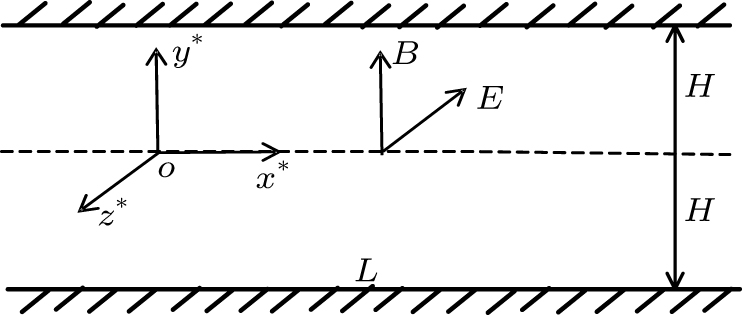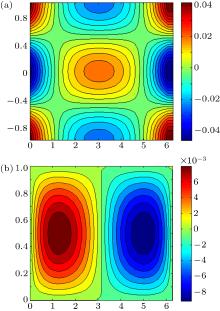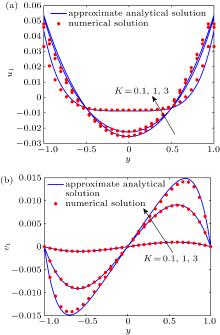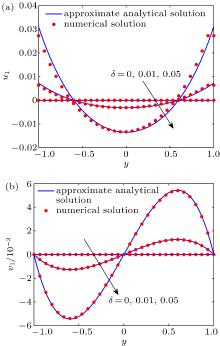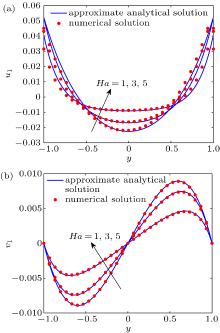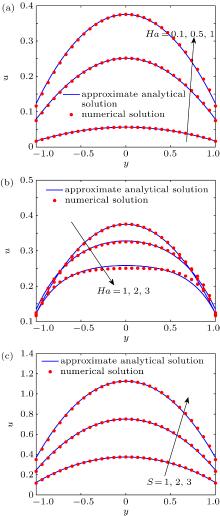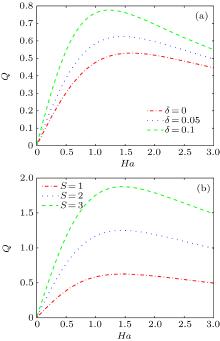中国物理B ›› 2020, Vol. 29 ›› Issue (11): 114101-.doi: 10.1088/1674-1056/abab71
Chun-Hong Yang(杨春红)1, Yong-Jun Jian(菅永军)1,†( )
)
Effect of patterned hydrodynamic slip on electromagnetohydrodynamic flow in parallel plate microchannel
Chun-Hong Yang(杨春红) and Yong-Jun Jian(菅永军)†
- School of Mathematical Science, Inner Mongolia University, Hohhot 010021, China

